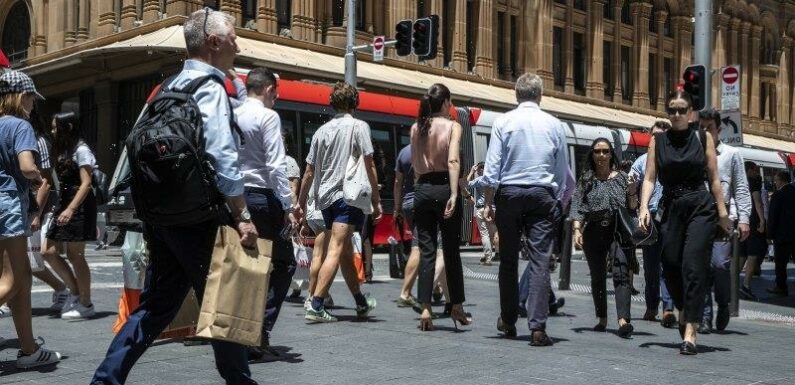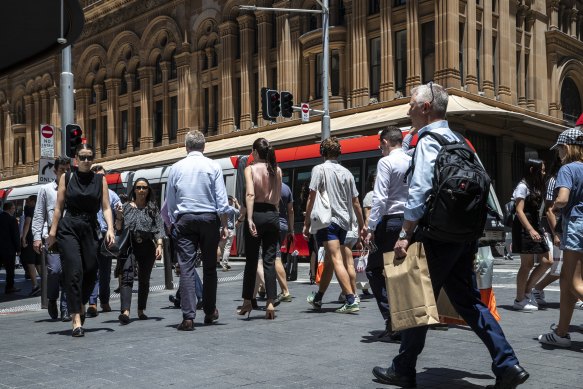
The nation’s jobless rate has increased for the first time in 10 months but new figures show a further step-up in the number of Australians holding down full-time employment.
The unemployment rate rose to 3.5 per cent in August, according to jobs data from the Australian Bureau of Statistics, still 1.8 percentage points lower than at the start of the coronavirus pandemic but the first rise since October.
The unemployment rate rose for the first time in nearly a year.Credit:Louie Douvis
The ABS data found the number of unemployed people actively looking for work rose to 487,700, while the number of employed people neared June’s high of 13.6 million, the bureau’s head of labour statistics, Lauren Ford, said.
“With employment increasing by 33,000 people and unemployment by 14,000, the unemployment rate rose 0.1 percentage points to 3.5 per cent in August, returning to the same rate as June.”
The number of people in full-time jobs increased by 58,800, while part-time employment fell by 25,300.
The overall increase in full-time work was driven by NSW, which added almost 74,000 positions. In Victoria, full-time employment fell for a second consecutive month to be down by 25,100 since its record peak in June.
The participation rate of working-age Australians lifted in August after falling in July, to 66.6 per cent, and the employment-to-population ratio rose to 64.3 per cent.
Tasmania and the Northern Territory experienced the largest increases in the unemployment rate, rising 1.2 and 1 percentage points respectively, followed by Victoria where the unemployment rate rose to 3.7 per cent.
Unemployment edged up to 3.4 per cent in NSW, while in Queensland unemployment fell by half a percentage point to 3.2 per cent.
Despite the increase in total employment and full-time work, neither are back to the record highs recorded in June. The Reserve Bank started increasing official interest rates in May.
The pandemic is also continuing to affect people’s work hours, as the number of people working fewer hours due to illness remained well above pre-pandemic levels, Ford said.
“The number of people working reduced hours due to being sick remained elevated in August, at around 760,000 people. This is around double the number we typically see at the end of winter,” she said.
Cut through the noise of federal politics with news, views and expert analysis from Jacqueline Maley. Subscribers can sign up to our weekly Inside Politics newsletter here.
Most Viewed in Politics
From our partners
Source: Read Full Article
